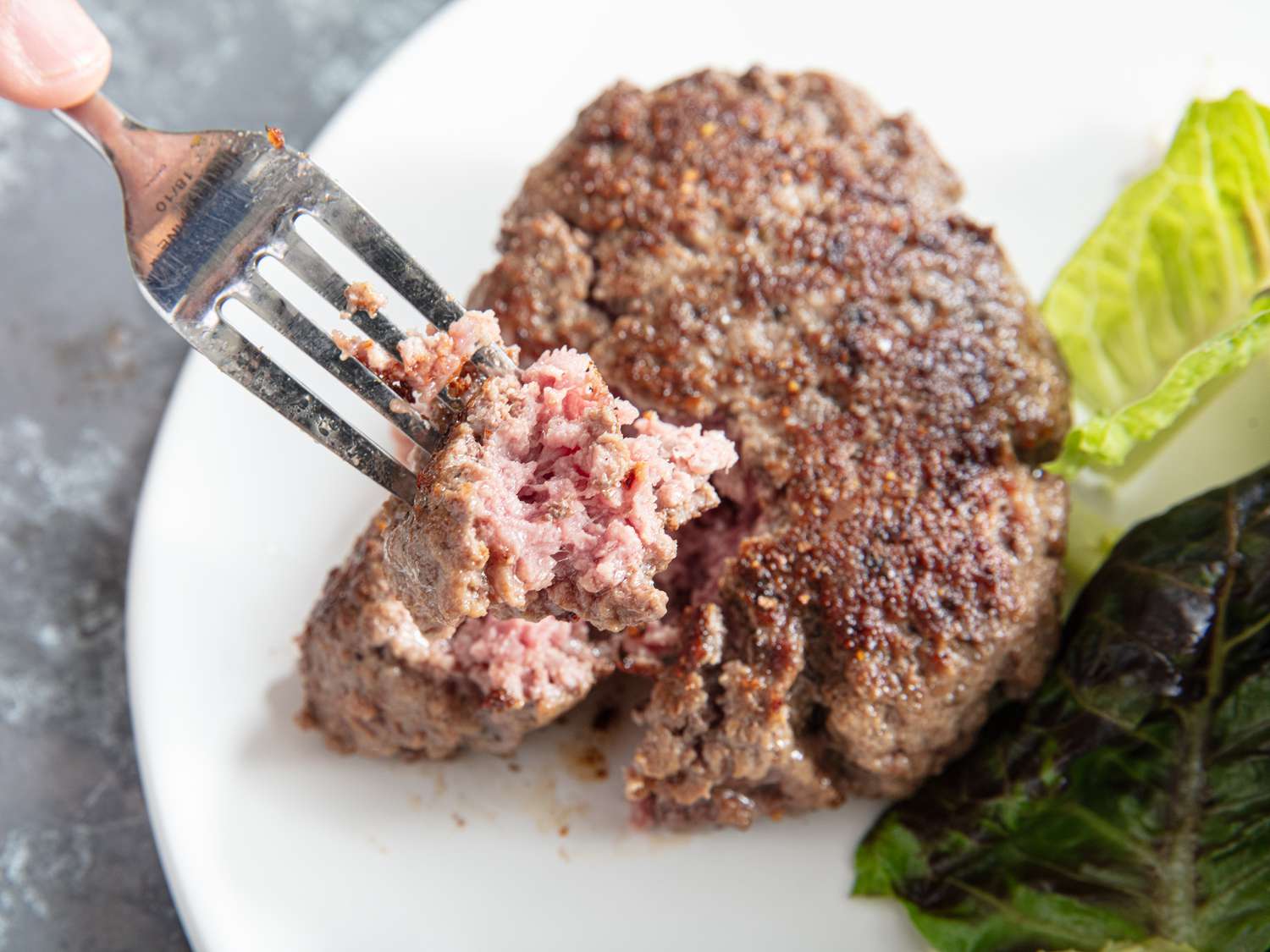
Why It Works
- Using 80% lean beef (20% fat) ensures a juicy patty that’s not dry and crumbly.
- Handling the beef minimally ensures a pleasantly loose texture, not a tight, meatloaf-like one.
- Flipping the patties repeatedly allows a deeply seared crust to develop while minimizing grey, overcooked meat inside.
Steak haché is not a hamburger, but I’d argue all the rules of a good hamburger more or less apply. A popular French bistro menu item, steak haché is simple ground or minced beef that’s cooked like a steak, then served as one might serve a steak in a bistro—with salad, fries, or both, and usually with some kind of classic sauce, whether it be peppercorn, béarnaise, a red wine sauce, or something else. It’s a simple and satisfying meal that delivers a steak-like experience at a much lower cost.
The main reason a patty made from ground beef is cheaper than an equivalent size steak has everything to do with the transformative power of grinding (or mincing) meat. By chopping the meat up into tiny bits, tougher, typically cheaper cuts of meat are rendered much more tender—the result of snipping chewy and collagenous muscle into much smaller bits. There are many parts of a cow—the chuck a prime example—that would be difficult to eat if cut and served as a medium-rare steak, but work great once chopped to tiny pieces.
Serious Eats / Amanda Suarez
This affordability factor is likely one of the things that made these types of minced steak dishes so popular throughout Europe, from the Hamburg steak to the French steak haché, and of course eventually to the American hamburger once it’d jumped the pond and taken on a life of its own here. With this type of dish, working-class folks were able to put meat on the table more often; during and after wartimes, when foods were rationed and often stretched with fillers, these dishes lent themselves to such frugality.
Outside of periods of hardship, though, I’d argue it’s preferable not to stretch the ground beef with fillers like breadcrumbs or seasonings like minced onion, for the simple fact that mixing things into ground beef transforms its texture by bonding the proteins. Instead of a juicy, beefy bite, you end up with something springier, more like a meatloaf. Since steak haché typically comes with some kind of steak-friendly sauce, I’d rely on that for whatever infusion of flavor you’re after.
Serious Eats / Amanda Suarez
Here, I use the same basic hamburger patty techniques we’ve long advocated on Serious Eats:
- Use a relatively high-fat ground beef mixture that’s at least 20% fat.
- Handle it minimally when forming the patties, then season generously on the exterior with salt and pepper.
- Sear in a hot skillet, flipping the patties every minute or two as they cook; this builds up a great, flavorful seared exterior while evening out heat penetration so that the interiors overcook around the edges less.
Once cooked, just slap the steaks on a plate, toss a salad, fries, or whatever you fancy alongside, add a condiment or sauce, and dig in. It’s a hearty and filling classic for a reason.

